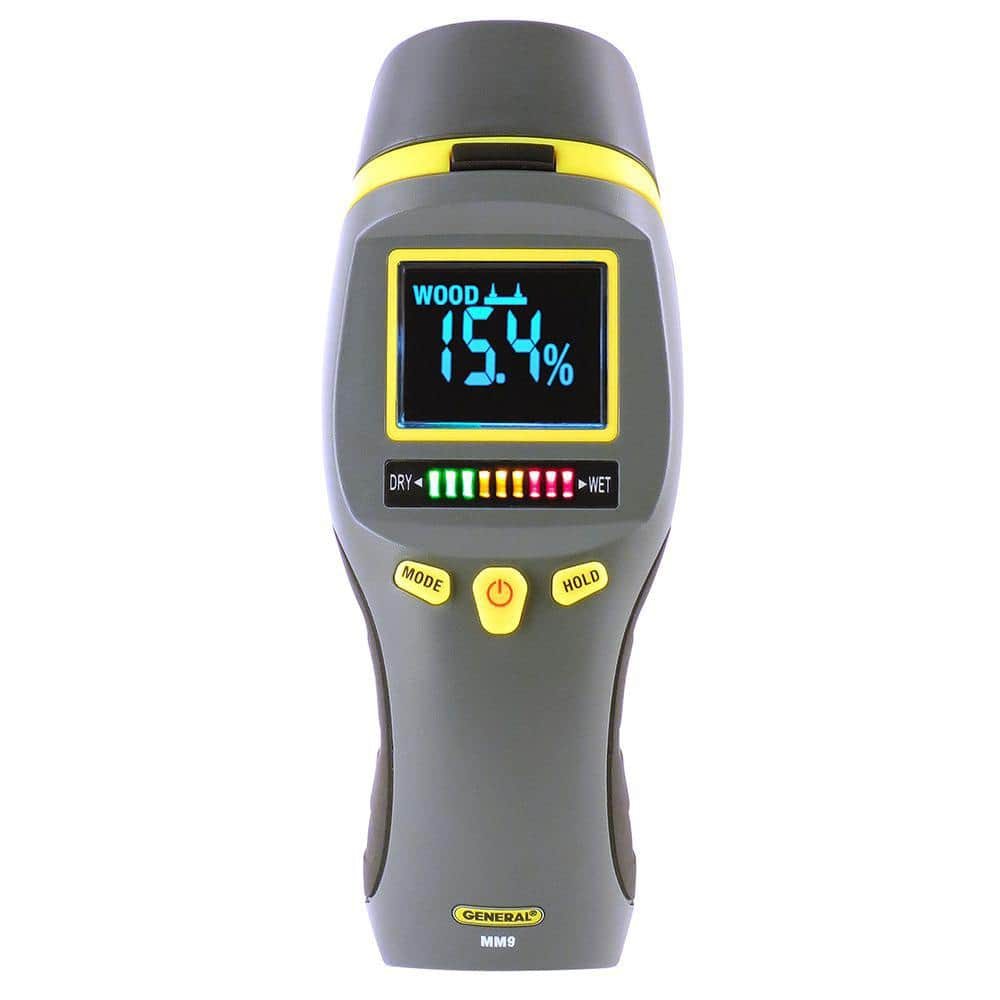Recognizing the Different Types of Moisture Meters and Their Applications
Recognizing the Different Types of Moisture Meters and Their Applications
Blog Article
Understanding the Relevance of a Dampness Meter in Protecting Against Mold And Mildew and Water Damages in your house
In the world of home maintenance, the existence of wetness can usually be a quiet yet formidable foe, capable of triggering prevalent mold and mildew growth and insidious water damages if left uncontrolled. Among the serene atmosphere of a home, hidden dampness issues can brew under the surface, positioning a risk to both building and health and wellness. Outfitted with the right tools and expertise, homeowners can proactively deal with these potential threats. Comprehending the value of a dampness meter in this fight is not merely a choice but a calculated need.

Significance of Dampness Detection
Reliable dampness detection methods are critical for protecting buildings and preventing potential mold growth and water damages. Wetness can permeate right into different structure materials, resulting in architectural concerns and health and wellness hazards - Moisture Meter. By utilizing a moisture meter, building proprietors can proactively determine locations susceptible to excess wetness, enabling timely intervention and reduction techniques
Wetness meters offer precise readings of moisture levels in various products such as drywall, timber, and concrete. This data helps in pinpointing locations of problem, also in concealed or hard-to-reach locations. Early detection of moisture build-up allows prompt repair work or adjustments to avoid further damage.

Exactly How Wetness Meters Work
Wetness meters play a pivotal duty in the aggressive recognition of excess moisture, aiding in the prevention of possible mold and mildew development and water damage by giving exact readings of wetness degrees in various building products. These tools work based upon various concepts, relying on their type. Pin-type dampness meters, for circumstances, have two pins that penetrate the material to gauge the electrical resistance in between them. When wetness is present, it boosts the product's conductivity, causing a lower resistance reading. Pinless wetness meters, on the various other hand, use electro-magnetic sensors to check the material without causing damages. These sensors give off electro-magnetic signals that pass through the material and measure the dielectric buildings, suggesting dampness material. Some advanced wetness meters incorporate both pin and pinless innovations for thorough wetness discovery. Understanding exactly how moisture meters feature is necessary for precise and prompt moisture degree assessments, making it possible for check here effective safety nets versus mold and water damages.
Finding Early Indication
Upon preliminary inspection of a residential property, recognizing refined indicators of excess wetness comes to be crucial in the early detection of prospective mold and mildew growth and water damage. Water spots can indicate leaks or infiltration, while peeling off paint or wallpaper might be a result of moisture endangering the bond of these products to the surface area. In addition, a rise in allergy signs and symptoms or respiratory issues among passengers might try these out recommend the presence of mold due to excess wetness.


Preventing Mold Development
Identifying very early indication of excess moisture within a residential property not just makes it possible for prompt detection of prospective mold and mildew development and water damages however additionally functions as a positive procedure in protecting against the proliferation of mold. To properly prevent mold development, it is crucial to address any type of sources of moisture quickly. This can include repairing look what i found leaks in windows, roof coverings, or pipelines, making certain correct ventilation in moist locations like restrooms and kitchens, and using dehumidifiers in high-humidity rooms. Consistently maintaining the building and checking's plumbing, roof covering, and rain gutters can likewise help in protecting against water invasion that could cause mold growth.
Checking dampness degrees in areas prone to moisture, such as cellars and creep areas, utilizing a dampness meter can also help in very early discovery of raised dampness degrees and potential mold growth. By taking proactive measures to avoid excess moisture and mold growth, property owners can protect their property and interior air high quality.
Advantages of Normal Tracking
Regular tracking of dampness levels in a property can play an essential duty in preserving a healthy and balanced interior environment and protecting against prospective mold and mildew and water damages. By frequently examining dampness levels, home owners can spot any type of concerns without delay and take necessary actions to prevent mold growth and water damage.
Furthermore, regular surveillance enables property owners to track patterns and patterns in dampness degrees over time. Inevitably, the regular surveillance of wetness levels empowers home owners to secure their home, secure their health and wellness, and preserve the honesty of their indoor setting.
Final Thought
In verdict, the use of a wetness meter is essential in stopping mold and mildew and water damages in homes. By finding very early warning indications of dampness, homeowners can take aggressive steps to protect against mold and mildew growth and expensive repair services.
By making use of a wetness meter, building owners can proactively identify areas susceptible to excess wetness, enabling for timely treatment and reduction methods.
Moisture meters provide accurate analyses of dampness levels in different materials such as drywall, concrete, and timber.Dampness meters play a crucial duty in the proactive identification of excess moisture, aiding in the prevention of potential mold development and water damages by giving exact analyses of dampness levels in different building materials. Understanding how moisture meters function is crucial for timely and accurate dampness degree analyses, enabling effective preventive actions against mold and water damage.
Checking wetness levels in areas susceptible to wetness, such as basements and crawl spaces, using a moisture meter can additionally assist in early discovery of raised wetness levels and possible mold and mildew growth.
Report this page